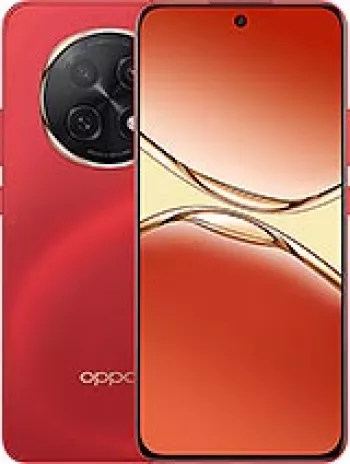
Overview of Oppo A33 (2015)
The Oppo A33, released in November 2015, is a smartphone that catered to the mid-range market segment. It features a blend of modest specifications suitable for general users seeking reliable performance without needing the high-end features found in flagship devices. Now discontinued, it offered good value for its price at launch.
Design and Build
In terms of design, the Oppo A33 was thoughtfully crafted with dimensions of 142.7 x 71.7 x 7.6 mm, giving it a slim profile. Weighing just 146 g, it provides a comfortable hand-feel and easy portability. It supports dual SIM functionality with Nano-SIM and Micro-SIM options, providing flexibility for users who require access to multiple networks.
Display
The Oppo A33 boasts a 5.0-inch IPS LCD display, offering decent viewing angles and color reproduction. Though its resolution of 540 x 960 pixels and pixel density of approximately 220 ppi may seem low by current standards, it was adequate for multimedia consumption and day-to-day tasks at the time of its release.
Performance
Under the hood, the Oppo A33 is powered by the Qualcomm MSM8916 Snapdragon 410 chipset, which features a quad-core 1.2 GHz Cortex-A53 CPU. This setup, along with the Adreno 306 GPU, was capable of handling basic applications and tasks with relative ease. The device came with 2GB of RAM, which supported decent multitasking for the period. However, more intensive processes or gaming may not perform as smoothly.
Software
On the software front, the Oppo A33 operates on Android 5.1 (Lollipop) with ColorOS 2.1, Oppo's custom user interface. ColorOS added a unique flair to the device with additional features and customization options that were well-received by its user base. Although Android 5.1 may seem outdated now, it was a competent operating system during the device's active years.
Storage
For storage, the Oppo A33 came with an internal capacity of 16GB. While this may not have been extensive, the inclusion of a dedicated microSDXC slot allowed users to expand storage significantly, accommodating more photos, apps, and media files.
Camera
The device featured an 8 MP rear camera with autofocus and an LED flash, capable of delivering decent image quality. Additional features like HDR and panorama enhanced its photographic capabilities. The camera supported video recording at 1080p@30fps, which was standard for smartphones around that time. The front-facing camera was a 5 MP shooter suitable for selfies and video calls.
Connectivity and Features
The Oppo A33 was equipped with various connectivity options, including Wi-Fi 802.11 b/g/n for reliable internet access, Bluetooth 4.0, GPS, and an FM radio. It used a microUSB 2.0 interface for charging and data transfer, and also supported USB On-The-Go (OTG) functionality. However, it did not include NFC support.
Battery Life
The phone housed a 2400 mAh non-removable Li-Po battery, which was fairly standard at the time. It provided reasonable battery life, allowing for up to 8 hours of talk time on 3G networks and up to 250 hours of standby time. While these figures might not be impressive today, they were competitive in its release window.
Price and Market Position
At launch, the Oppo A33 was priced around 240 EUR, making it an attractive option for cost-conscious consumers seeking a balanced device without unnecessary features. Its competitive pricing in combination with its specifications ensured it was an appealing choice in the budget segment of the smartphone market.
Conclusion
Overall, the Oppo A33 (2015) served as a reliable mid-range smartphone, offering a good mix of performance, design, and functionality for its time. Although it might not compete with modern smartphones, it remains a testament to Oppo's commitment to providing quality devices across different price points. As a discontinued model, it reflects the rapid evolution of smartphone technology, serving as a milestone in Oppo's product lineup.
Key Features of Oppo A33 (2015)
- Network Support: GSM / HSPA / LTE with 2G, 3G, and 4G capabilities.
- Dimensions and Weight: Compact design at 142.7 x 71.7 x 7.6 mm and lightweight at 146 g.
- Dual SIM Support: Compatible with Nano-SIM and Micro-SIM.
- Display: 5.0-inch IPS LCD for clear viewing.
- Performance: Powered by Qualcomm Snapdragon 410 chipset with a Quad-core 1.2 GHz CPU.
- Operating System: Android 5.1 Lollipop with ColorOS 2.1 UI.
- Storage: 16GB internal storage with 2GB RAM, and expandable via microSD card slot.
- Main Camera: 8 MP shooter with autofocus, LED flash, HDR, and panorama features.
- Selfie Camera: 5 MP front-facing camera.
- Connectivity: Includes Wi-Fi, Bluetooth 4.0, GPS, FM radio, and microUSB 2.0.
- Loudspeaker and 3.5mm Jack for audio options.
- Sensors: Accelerometer, proximity, and compass for enhanced usability.
- Battery Life: Long-lasting Li-Po 2400 mAh battery with up to 250 hours of standby time on 3G.
Disadvantages of Oppo A33 (2015)
- Low Screen Resolution: The display resolution is only 540 x 960 pixels, which is relatively low compared to modern standards, leading to a less sharp display.
- Limited Internal Storage: Comes with only 16GB of internal storage, which might not be sufficient for users with large app libraries or media collections.
- Older Operating System: Ships with Android 5.1 (Lollipop), which is outdated and may not support newer applications or software updates.
- Limited RAM: 2GB of RAM could lead to slower multitasking and performance compared to newer models with higher RAM capacities.
- No NFC Support: Lack of NFC limits the ability to use contactless payment systems and other NFC-based features.
- Non-removable Battery: The 2400 mAh battery is non-removable, restricting the ability to swap batteries on the go.
- Discontinued Status: The device is discontinued, which may affect the availability of spare parts and official support.

View Also
More Phones
All Rights Reserved +14268 Phones © Mobilawy 2025

























